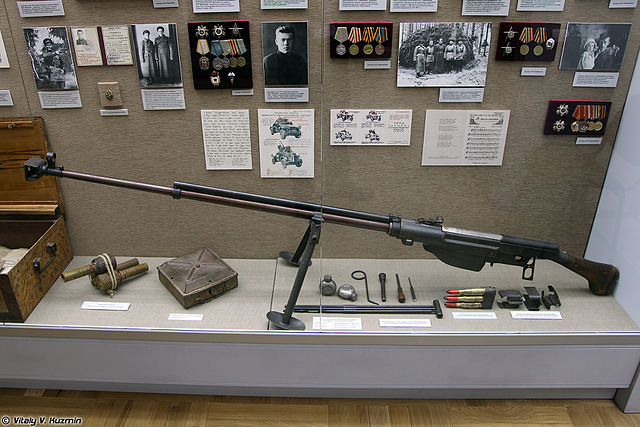The Solothurn S18-1000 20 mm was a Swiss anti-tank rifle used during the Second World War. It was a variant of the earlier S-18/100 with modifications for a higher muzzle velocity, as well as a larger cartridge size. The more powerful ammunition resulted in significant recoil, which was problematic for the gunner, and its size made portability difficult.
20mm Tankbüchse 40 Solo S18-1000
20 mm Solothurn Tankbüchse S18-1100, AA-mount
An anti-tank rifle is an anti-materiel rifle designed to penetrate the armor of armored fighting vehicles, most commonly tanks, armored personnel carriers, and infantry fighting vehicles. The term is usually used for weapons that can be carried and used by one person, but is sometimes used for larger weapons. The usefulness of rifles for this purpose ran from the introduction of tanks in World War I until the Korean War. While medium and heavy tank armor became too thick to be penetrated by rigid projectiles from rifles that could be carried by a single soldier, anti-tank rifles continued to be used against other "soft" targets, though recoilless rifles and rocket-propelled grenades such as the bazooka were also introduced for infantry close-layer defense against tanks.
Soviet PTRS anti-tank rifle in a museum
Mauser 1918 T-Gewehr 13.2 x 92 mm anti-tank rifle at the Musée de l'Armée in Paris.
Polish Kb ppanc wz.35 7.92 mm anti-tank rifle used by the Polish Army during the Invasion of Poland (September 1939).





